
All Solutions
Page 506: Review
Transparent transmits all incident light.
White light visible electromagnetic waves.
Concave mirror converging mirror.
Real image seen on a screen.
Normal $90^{o}$ to the surface.
Virtual image from an apparent light source.
Convex mirror diverging mirror.
Transparent transmits all incident light.
White light visible electromagnetic waves.
Concave mirror converging mirror.
Real image seen on a screen.
Normal $90^{o}$ to the surface.
Virtual image from an apparent light source.
Convex mirror diverging mirror.
It is placed behind the mirror and the distance from the mirror is same as the distance of the object form it.
It is placed behind the mirror and the distance from the mirror is same as the distance of the object form it.
1., Angle of incidence equals to the angle of reflection.
2., Incident ray, reflected ray and normal all lie in the same plane.
2., Incident ray, reflected ray and normal all lie in the same plane.
1. Angle of incidence is equal to the angle of reflection.
2. The incident ray, normal and the reflected ray all lie in the same plane. What this means is that they are on the same side of the object.
$textit{b.}$, In the process of electric discharge light is generated when electricity passes through a gas and electrical current causes gas to glow which will produce light.
$textit{c.}$, In the process of triboluminescence light is produced when certain crystals are exposed to the friction in someway such as rubbed, crushed or scratched.
$textit{b.}$, Light is generated when electricity passes through a gas and electrical current causes gas to glow which will produce light.
$textit{c.}$, Light is produced when certain crystals are exposed to the friction in someway such as rubbed, crushed or scratched.
radio waves, microwaves, infrared, red light, green light, ultraviolet and X-rays.
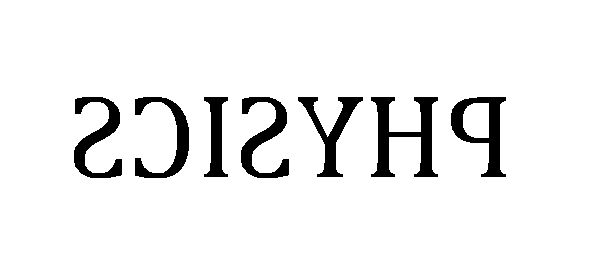
Rays of light seem to come from the source of light which is placed behind the mirror and they never converge in front of mirror.
Rays of light seem to come from the source of light which is placed behind the mirror and they never converge in front of mirror.
$textit{b.}$, Object is placed within the focal length, therefore, image is virtual.
$textit{b.}$, Within the focal length.
$textit{b}$, A car windshield is a shiny, smooth surface which produces glare in eyes, therefore, specular reflection is exhibited.
$textit{c.}$, Sweater has a dull appearance along with all the clothes, therefore, diffuse reflection will be exhibited.
$textit{d.}$, High gloss paint have glossy appearance which leads to both specular and diffuse reflection.
$textit{b}$, specular reflection
$textit{c.}$, diffuse reflection
$textit{d.}$, both specular and diffuse reflection
47text{textdegree}
$$
47text{textdegree}
$$
52text{textdegree}
$$
52text{textdegree}
$$
90text{textdegree}-14text{textdegree}=76text{textdegree}
$$
76text{textdegree}
$$
0text{textdegree}
$$
0text{textdegree}
$$
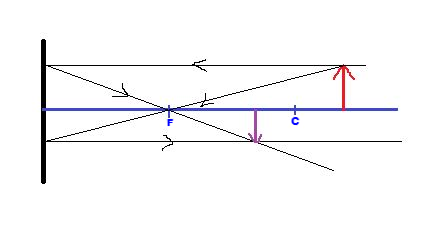
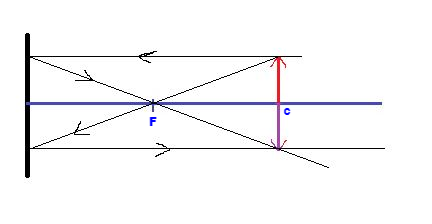
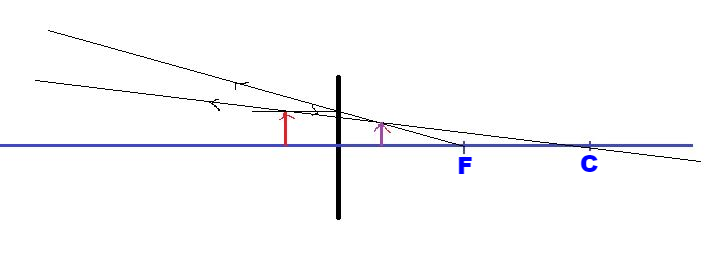
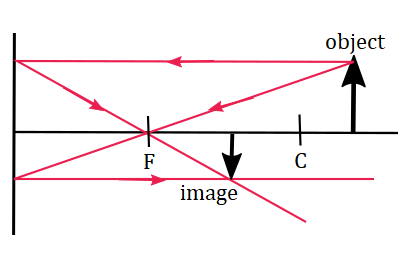
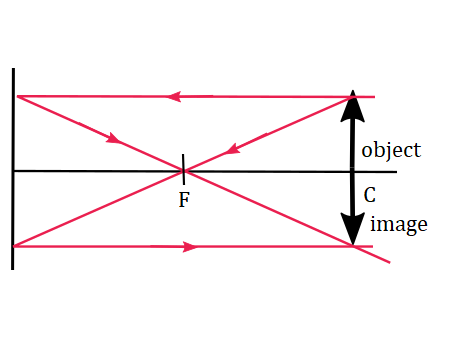
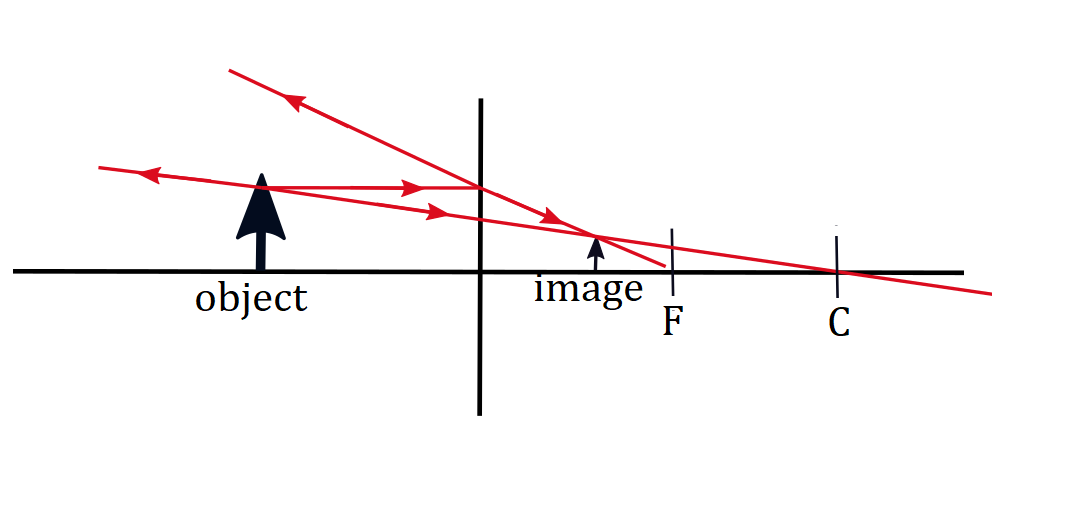
$textit{b.}$, Image is real, reversed, but same size as the object and is on the same distance from the centre as the object.
$textit{c.}$, Image is virtual, upright and smaller than the object.
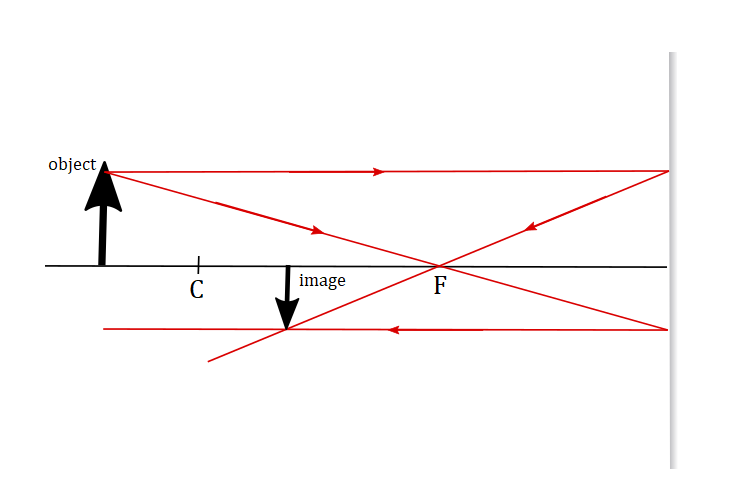
Reflected rays meet in one point at where the image is formed.
We have to measure distance between mirror and focus and can easily mark centre of curvature which will be equal to twice of $f$.
One incident ray is parallel to the principal axis and reflects by passing through the focal point, the other one strikes surface of the mirror by passing through the focal point and reflects parallel to the principal axis.
Centre will be placed at the distance which equals twice of $f$.
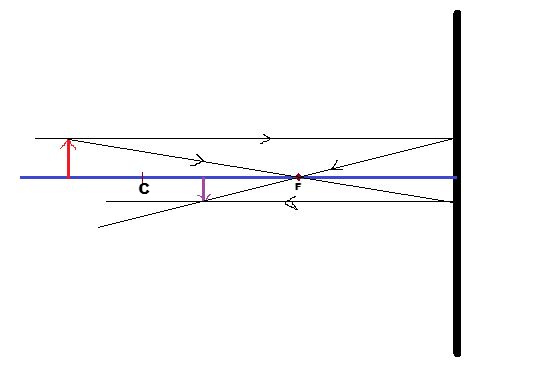
$textit{a.}$, Method of producing light:
In the case of incadescent bulbs, light is produced by the glowing of the filament.
The filament gets power by electrical current and it is getting hot which gives light and heat as a result.
In the case of fluorescent bulbs light is produced by mercury atoms which are get energy from the electrical current. This atoms later emit ultraviolet light which strikes walls of the tube that is coated in fluorescent material so that the visible light can be produced.
$textit{b.}$, Efficiency in producing light
Incandescent bulbs are pretty inefficient when it comes to light producing since only $10 %$ of electrical energy which powers them
is converted to light and energy which is left is released as heat, but fluorescent are more efficient since they use less electrical power to produce light.
Initial cost of incandescent bulbs is less than of the fluorescent ones since it is more expensive to make them.
$textit{d}$, Long term cost
Long term cost is of incandescent bulb is greater since those are pretty inefficient, thus, expensive to maintain.
One incandescent bulb approximately consumes electrical energy as five fluorescent bulbs will.
$textit{e.}$, Environmental consequences:
Proper disposal is required for fluorescent bulbs and incandescent can be disposed off easily because mercury atoms of fluorescent bulbs are toxic.
$textit{b.}$, Fluorescent bulbs are more efficient.
$textit{c.}$, Initial cost of incandescent is less.
$textit{d.}$, Long term cost of incandescent bulbs is greater.
$textit{e.}$, Incandescent bulbs can be disposed off easily and fluorescent cannot since they consist toxic material.
Image which is formed by a plane mirror is: virtual, same shape and size as object and located behind the mirror.
Reflected rays are being spread and reflected on the same side where the actual object is, therefore, the image is formed from the extensions of those rays which converge behind the mirror.
Also, these bulbs does not last long because of the way the emit light, and therefore, it is better to use the ones that last longer.
$textit{b.}$,Focus of this mirror is at the place where the blast furnace is located. The parallel beams of light from the sun converge to this place on reflection and power the furnace by their collective heat.
$textit{c.}$, Biggest advantage is because the sun is renewable source of energy and there will be no pollution as a consequence, but the disadvantage is because it cannot be used at night.
$textit{b.}$, Since the focus of the mirror is placed where the blast furnace is located, parallel beams of light will converge into this point and power the furnace by their collective heat.
$textit{c.}$, Sun is renewable source of energy and cause no pollution, but cannot be used at night.

